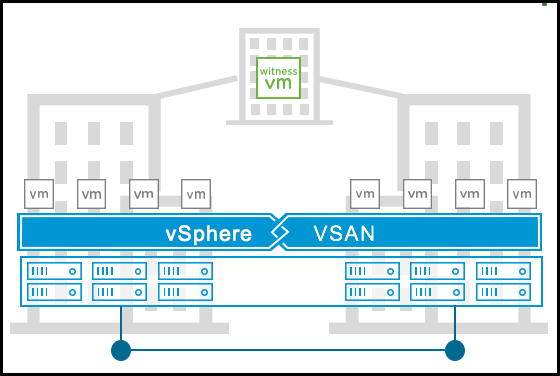vSAN Stretched cluster introduced in vSAN 6.1 and it brings high availability in an active-active fashion. In this architecture, ESXi hosts would be placed in two different physical locations and join together with high bandwidth low latency networking. But from a management perspective despite hosts being in two different sites they belong to one single vSAN Cluster and share their resources. So this solution can be used in environments where disaster avoidance is a critical matter. Because it gives you the ability to avoid disaster, or recover from a disaster by having two different physical sites that host your applications. So you need to group the hosts based on their physical locations and put them in two different fault domains.


